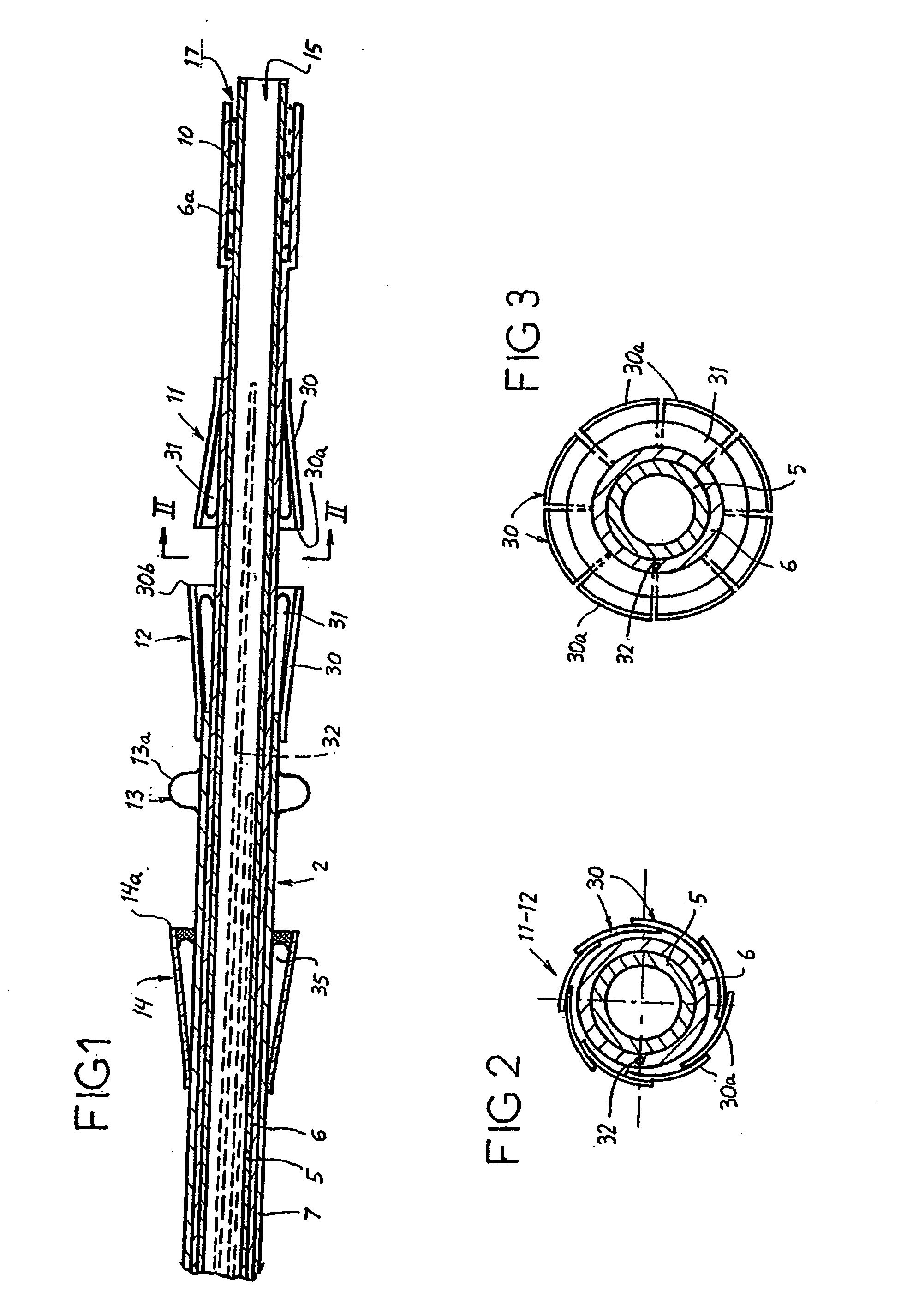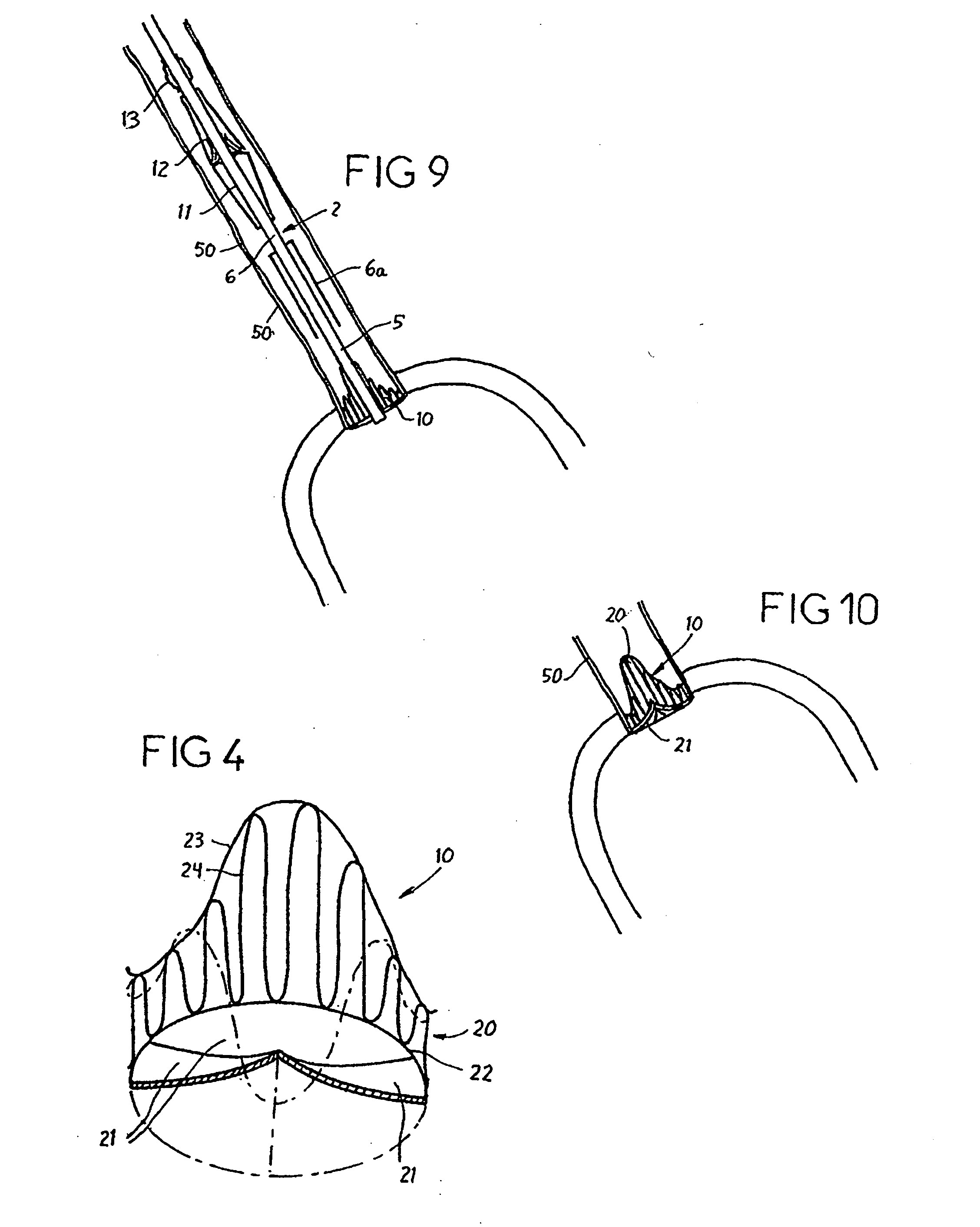Non-cylindrical prosthetic valve system for transluminal delivery
a prosthetic valve and non-cylindrical technology, applied in the field of prosthetic cardiac valve and related deployment system, can solve the problems of complex complex structure, prolonged patient hospitalization, and high cost, and achieve the effects of avoiding substantial migration of the prosthetic valve assembly, eliminating problems, and optimizing function and durability
- Summary
- Abstract
- Description
- Claims
- Application Information
AI Technical Summary
Benefits of technology
Problems solved by technology
Method used
Image
Examples
Embodiment Construction
[0136] Reference is now made to the figures wherein like parts are designated with like numerals throughout. FIGS. 1 to 3 represent a device 1 for replacing a heart valve by a percutaneous route. This device comprises a tubular catheter 2 formed from three tubes 5, 6, 7 engaged one inside the other and on which there are placed, from the proximal end to the distal end (considered with respect to the flow of blood, that is to say from right to left in FIG. 1), a prosthetic valve 10, two series of blades 11, 12, a balloon 13 and a filter 14. The three tubes 5, 6, 7 are mounted so that they can slide one inside the other. The interior tube 5 delimits a passage 15, the cross section of which is large enough to allow blood to flow through it. At the proximal end, the intermediate tube 6 forms a bell housing 6a delimiting, with the interior tube 5, an annular cavity 17 in which the prosthetic valve 10 is contained in the furled condition.
[0137]FIG. 4 shows that this valve 10 comprises an...
PUM
 Login to View More
Login to View More Abstract
Description
Claims
Application Information
 Login to View More
Login to View More - R&D
- Intellectual Property
- Life Sciences
- Materials
- Tech Scout
- Unparalleled Data Quality
- Higher Quality Content
- 60% Fewer Hallucinations
Browse by: Latest US Patents, China's latest patents, Technical Efficacy Thesaurus, Application Domain, Technology Topic, Popular Technical Reports.
© 2025 PatSnap. All rights reserved.Legal|Privacy policy|Modern Slavery Act Transparency Statement|Sitemap|About US| Contact US: help@patsnap.com



